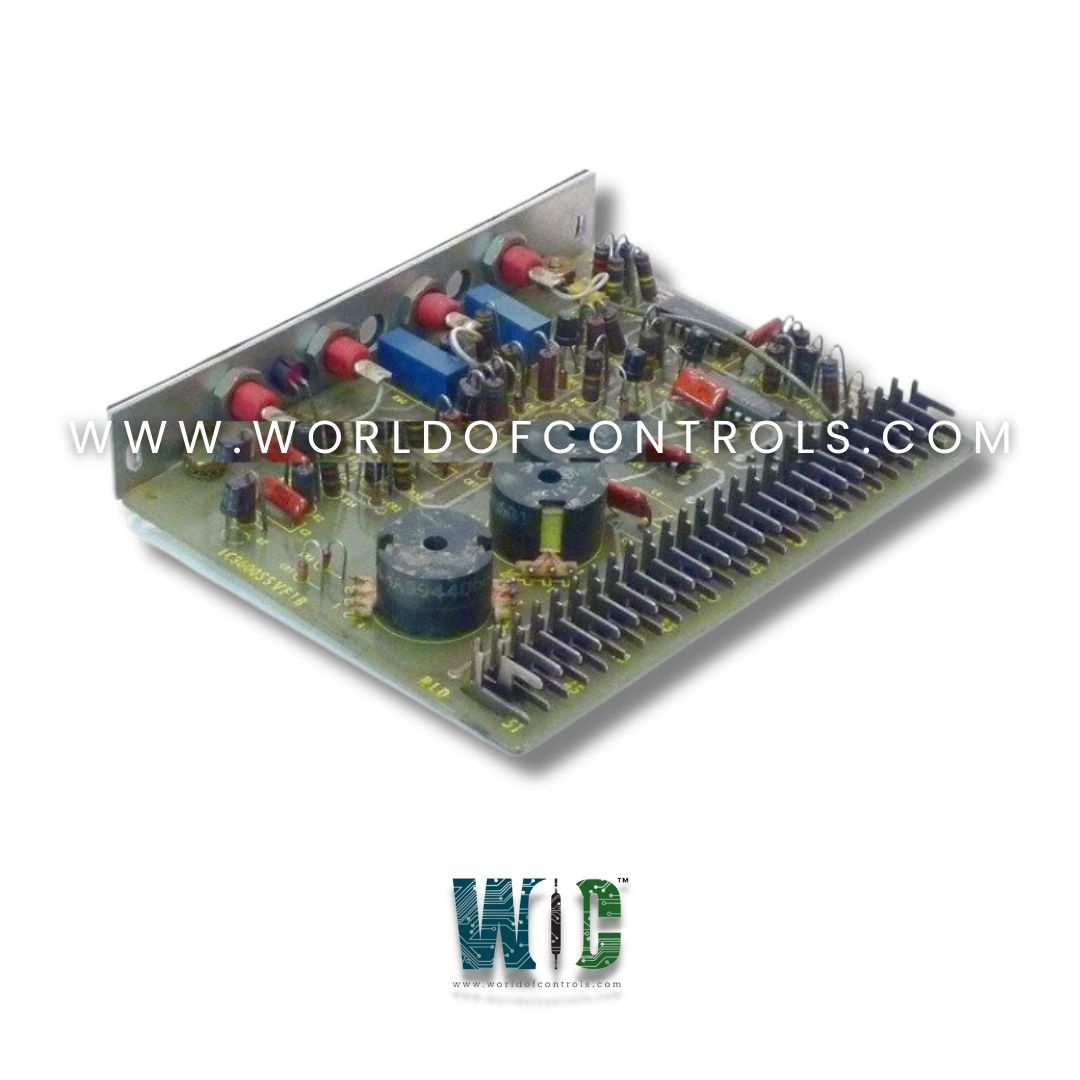SPECIFICATIONS
Part Number: IC3600SSVF1C1B
Manufacturer: GE Fanuc
Country of Manufacture: United States(USA)
Availability: In Stock
Product Type: Servo Valve Feedback Card (SCB)
Functional Description
IC3600SSVF1C1B is a Servo Valve Feedback Card manufactured by GE Fanuc. It is a part of Mark I and II control systems. Servo valves regulate functions like fuel flow, steam valve control, and guide vane positioning. For precise and safe operation, it is essential that the system constantly monitors and verifies the actual position of these valves, comparing them to the command signals. This feedback card enables closed-loop control by capturing signals from the valve actuators and feeding them back into the control logic. This helps maintain accurate control over turbine parameters, prevents mechanical overshoot or drift, and allows real-time adjustments for optimal efficiency.
Component Design of the Turbine Control System
The turbine control system is a sophisticated integration of various components designed to ensure the efficient and safe operation of gas turbines. Each part of the system plays a critical role, from monitoring turbine performance to making real-time adjustments based on sensor feedback. The major components that make up the turbine control system include the turbine control panel, sensors, and microcomputer, which work in tandem to regulate turbine performance.
Key Components of the Turbine Control System
- Turbine Control Panel: The turbine control panel serves as the central hub for monitoring and managing the turbine's operational parameters. It houses the necessary hardware for interfacing with the turbine's control and monitoring systems, facilitating communication between the sensors, actuators, and the central processing unit (CPU) that interprets the system data. The panel is designed for ease of maintenance and quick access to critical components.
- Sensors: Sensors are vital in providing real-time data to the turbine control system. These sensors, which are often thermocouples, pressure transducers, and flow meters, continuously monitor parameters such as temperature, pressure, fuel flow, and exhaust emissions. The sensors' feedback is essential for regulating the turbine’s performance and ensuring it operates within safe limits.
- Microcomputer for the Integrated Turbine System (ITS): At the heart of the turbine control system lies the microcomputer, which performs complex calculations and decision-making tasks to maintain optimal turbine operation. The microcomputer is broken down into three principal parts:
- Small Electronics Module: The small electronics module is the core of the microcomputer, housing the central processor, memory expander, and essential converters for digital and analog signal processing. The processor performs the necessary calculations, while the memory expander ensures there is enough capacity to store the turbine’s operational data, control logic, and system settings.
- Low-Level Thermocouple Input Stick: The thermocouple input stick is a specialized device that interfaces with the turbine's thermocouples, which are used to measure temperature at various points within the turbine. This input stick is equipped with connection points for terminating thermocouple wires. It amplifies the signals received from the thermocouples to ensure they are strong enough for processing. It multiplexes the signals, meaning it switches between different thermocouple inputs according to instructions from the computer, effectively managing multiple temperature measurements from various parts of the turbine. It passes the processed signals to the analog-to-digital converter (ADC), which converts the analog temperature signals into a digital format that the microcomputer can read and process.
- Power Supply: The microcomputer relies on a stable power supply to ensure consistent operation of the system. The power supply provides the necessary voltage and current to the microcomputer, ensuring it has enough energy to process input data, control outputs, and communicate with other parts of the turbine control system.
Design and Manufacturing of the Microcomputer Cards
- The microcomputer card is designed using the Intel 8080 microprocessor, which was one of the earliest microprocessors to be widely used in control systems. It is paired with four 2708 erasable memory chips, which provide non-volatile memory storage for the system's data, programs, and configuration settings.
- To ensure the highest level of performance and reliability, extensive quality control measures and careful manufacturing techniques are employed during the assembly of these cards. The assembly process includes rigorous testing to ensure the cards meet the high standards required for industrial applications, especially in the demanding environment of turbine control systems.
- The microcomputer card works in conjunction with the expander card (shown in Figure 23), which provides additional memory and processing capacity. The combination of these components allows the turbine control system to process large volumes of data in real-time, enabling precise adjustments to turbine parameters and ensuring optimal performance and safety.
WOC has the largest stock of Speedtronic Mark II Spare Parts and we can repair your faulty spares with a warranty. Our team of experts is available to support your urgent needs related to critical spares, contact us.
FREQUENTLY ASKED QUESTIONS
What is GE Fanuc IC3600SSVF1C1B?
It is a Servo Valve Feedback Card used in gas turbine control systems.
What microprocessor does the microcomputer use?
The microcomputer utilizes the Intel 8080 microprocessor, which was one of the first widely used processors for control systems. This microprocessor allows the system to handle complex control tasks, process input data, and execute commands in real-time.
How is the power supply designed for the microcomputer?
The power supply for the microcomputer ensures a stable voltage and current, necessary for reliable system operation. It typically uses unregulated DC power from the station battery, which is then converted into the required precision-regulated outputs. This design ensures long-lasting, trouble-free operation in demanding turbine control environments.
